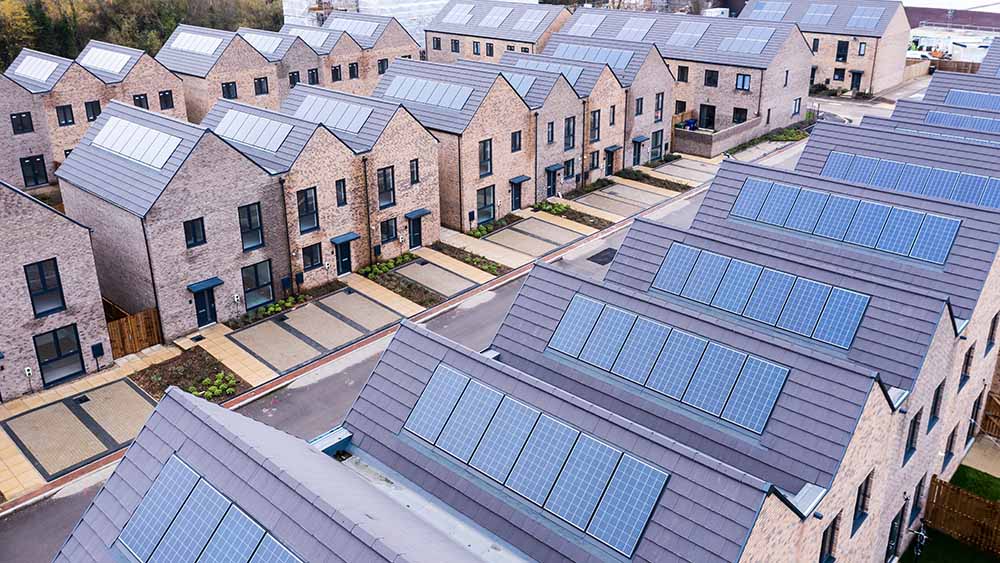
In the UK, up to 40% of household energy consumption goes towards domestic heating. Therefore, it's important to address both existing buildings and new construction projects to enhance energy efficiency. The updated criteria is designed to ensure that all new homes constructed from 2025 onwards produce 75-80% less carbon emissions.
At the core of the current building regulations is the Approved Part L requirements, focusing on the "Conservation of Fuel & Power." It introduces the Fabric Energy Efficiency Standard, which sets a recommended upper limit on the energy required for space heating and cooling. This standard assesses the energy efficiency of new buildings, considering factors such as fabric U-values, thermal bridging, external heat gain, and more.
Part L compliance provides a roadmap for current and future energy efficiency standards under various building rules. The regulations consist of details on minimising heat gains and losses, conducting air permeability and pressure testing, insulation requirements, boiler efficiency, lighting, and hot water storage systems. The ultimate goal is to achieve a 31% reduction in carbon emissions for all new homes and a 27% reduction for new non-domestic buildings.
While the 'fabric first' approach to Net Zero 2050 is gaining momentum across the construction industry, the primary focus is to make buildings perform better using eco-friendly and low carbon methods before relying on fossil fuels, mechanical or electrical systems and any other high carbon embodied solutions. Learn more about sustainable home insulation on the SuperFOIL website.
While home insulation tops the energy conservation efforts, choosing the right insulation solution also becomes a priority in meeting building codes. Multifoil insulation, compared to many traditional insulation types, offers several advantages in this context; beyond providing high-performance insulation, it consists of a built-in vapour control layer (VCL) and a reflective radiant barrier. By maximising airtightness and eliminating thermal bridging, multifoil solutions ensure adherence to the updated Part L building regulations, while fitting in with the demands of modern methods of construction.
SuperFOIL Insulation is one of the leading multifoil insulation providers in the market. The 3-in-1 multifoil insulation range offered by SuperFOIL means you not only benefit from superior quality insulation but also gain a much-needed vapour control layer and reflective radiant barrier. Additionally, the breather membrane range offers protection from condensation and ensures that your home maintains the right temperature all year round.
SuperFOIL Multifoil insulation stands out as a versatile solution that can help you achieve Part L building regulations without limiting the space used within the building structure. Its flexible, long-lasting, lightweight, and easy-to-install structure saves you space, time, and money. Unlike mineral wool and PIR insulation, which are typically installed between the timbers, multifoil insulation is applied over the timber frames in continuous layers, reducing the risk of common insulation problems such as thermal bridging or interstitial condensation.
Achieving building regulations compliance with SuperFOIL solutions alone is entirely possible. When installed properly with an air gap, and in combination with the right SuperFOIL multifoil solution (DUET system), the structure will perform at optimum thermal efficiency all year round.
Thermal bridging can potentially decrease the effectiveness of insulation materials by as much as 15%. However, the use of SuperFOIL breather membrane products can significantly minimise this risk. By applying SuperFOIL in continuous layers on the timber frame, the likelihood of thermal gaps or cold spots is reduced, and it establishes an airtight and vapour-resistant inner barrier.
SuperFOIL insulation solutions are installed above or below the rafters (depending on the build-type) which provides a lot of flexibility in application. SuperFOIL’s versatile design also allows combined installations to complement traditional non-reflective insulation materials such as mineral wool or PIR boards.
Encon is a stockist of SuperFOIL products, available across our nationwide branches. View the complete range.